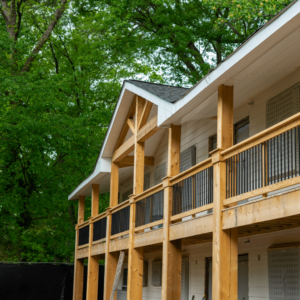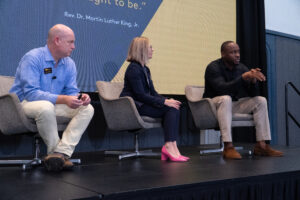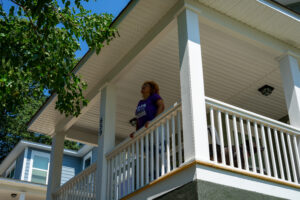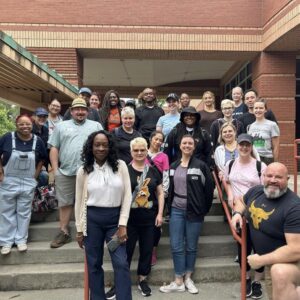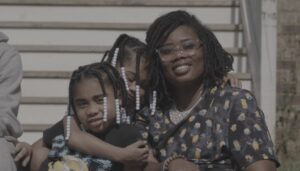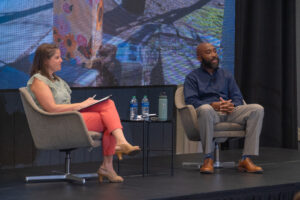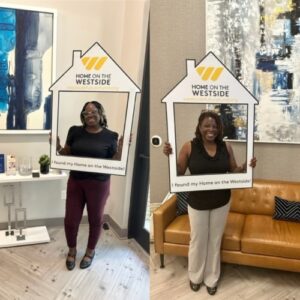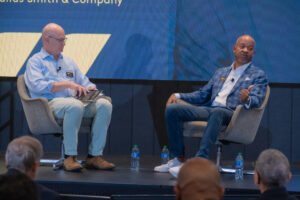While Atlanta Ballet’s graceful performances have enchanted audiences for decades, there is a lesser-known but equally compelling story unfolding behind the scenes. Their recent endeavors have extended beyond the world of pirouettes and pliés as the Westside-based organization is embracing a new kind of performance – one that’s centered around giving back to the community they hold dear.
Tom West, Executive Director at Atlanta Ballet, moved to the city two years ago to assume his role with the organization, bringing with him over 20 years of experience in performing arts organizations across the nation leading development programs focused on supporting performers and the communities in which they live and work. Recognizing the value of bonding beyond the performance stage and ballet studio, West decided to lead his team on a journey that transcended dance and focused on community service. His aim was clear: create an experience that unites their staff and faculty around a shared purpose – a purpose that didn’t revolve around ballet but rather around the community they aspire to uplift.
It was amidst this backdrop that the partnership between Atlanta Ballet and Westside Future Fund began to take shape. West, having just moved and being unfamiliar with the community, reached out to current and former Atlanta Ballet stakeholders for leads on where to get started – which is when he met Virginia Hepner.
Hepner, a current WFF Board member and impassioned Atlanta Ballet supporter, played a pivotal role in bringing these two organizations together. With her guidance, the ballet’s leadership connected with the Westside Future Fund’s staff to understand their innovative and impactful initiatives.
“We went over for a meeting with WFF’s leadership team to learn more about the work that they are doing there, which turned out to be incredibly innovative and really powerful,” said West. “We got really excited thinking about how we could develop a meaningful relationship to help. When we started thinking about how we should volunteer, my first call was to the Westside Future Fund. Virginia is so passionate about the organization, it was hard not to share that same passion.”
With excitement and determination, the Ballet reached out to the Westside Future Fund to explore volunteer opportunities. WFF introduced them to M. Agnes Jones Elementary, a school with a need for volunteers to enhance the experience of their annual field day event for students. Eager to contribute, the ballet team jumped at the chance.
For two years running, the Atlanta Ballet team immersed themselves in the experience. Kids, faculty, and volunteers joined together for activities including relay races, tug of war, cornhole and more. For Kelly Tonina, Centre Administrative Director at Atlanta Ballet, it was a day to remember.
“I’ve been to the volunteer field day at M. Agnes Jones both years, and both times it’s been so much fun. It’s just awesome to watch hundreds of little kids running around and having a good time. You can’t help but enjoy hearing the laughter of kids and seeing them be active and just having a good time,” said Tonina. “Myself and all of our colleagues were spread out with different tasks and it was a great time to see each other out of the office. Our artistic director was helping the kids at tug of war. It was so hilarious. I’d never seen him in that element before.”
What truly made this experience remarkable was the partnership between the Atlanta Ballet team and the school’s faculty. Working side by side with educators, the ballet staff saw a different side of their colleagues, allowing everyone to shed their professional roles and simply have fun together. This unique interaction demonstrated the profound impact of coming together for a shared cause.
Beyond the immediate impact of the volunteer work, the Atlanta Ballet team’s involvement with the Westside Future Fund has also offered them a deeper understanding of the fabric of Atlanta. Through their collaboration, they’ve come to appreciate the intricate aspects of the city, forming connections that extend far beyond the dance stage.
“Still being new to Atlanta, I’m learning a lot about the history and the geography of the city. The introduction that Virginia and the Westside Future Fund team did for me was a real gift,” said West. “Just understanding the makeup and dimensions of this particular part of the city.”
Atlanta Ballet’s commitment to the Westside community extends beyond field day, however. Their partnership with Hollis Innovation Academy, offering dance instruction at no cost, exemplifies their long-standing dedication to their neighboring communities.
“I’m impassioned for the area just because of what the Westside Future Fund is trying to accomplish, rebuilding the community in a way that people who live there can stay there and have a better place to raise their families,” said Tonina. “I appreciate that the Atlanta Ballet is a part of this community and I think it’s a great opportunity for us to branch out and let people know that we are here and we support them, especially right in our backyard.”
To learn more about Atlanta Ballet, visit https://www.atlantaballet.com/.

